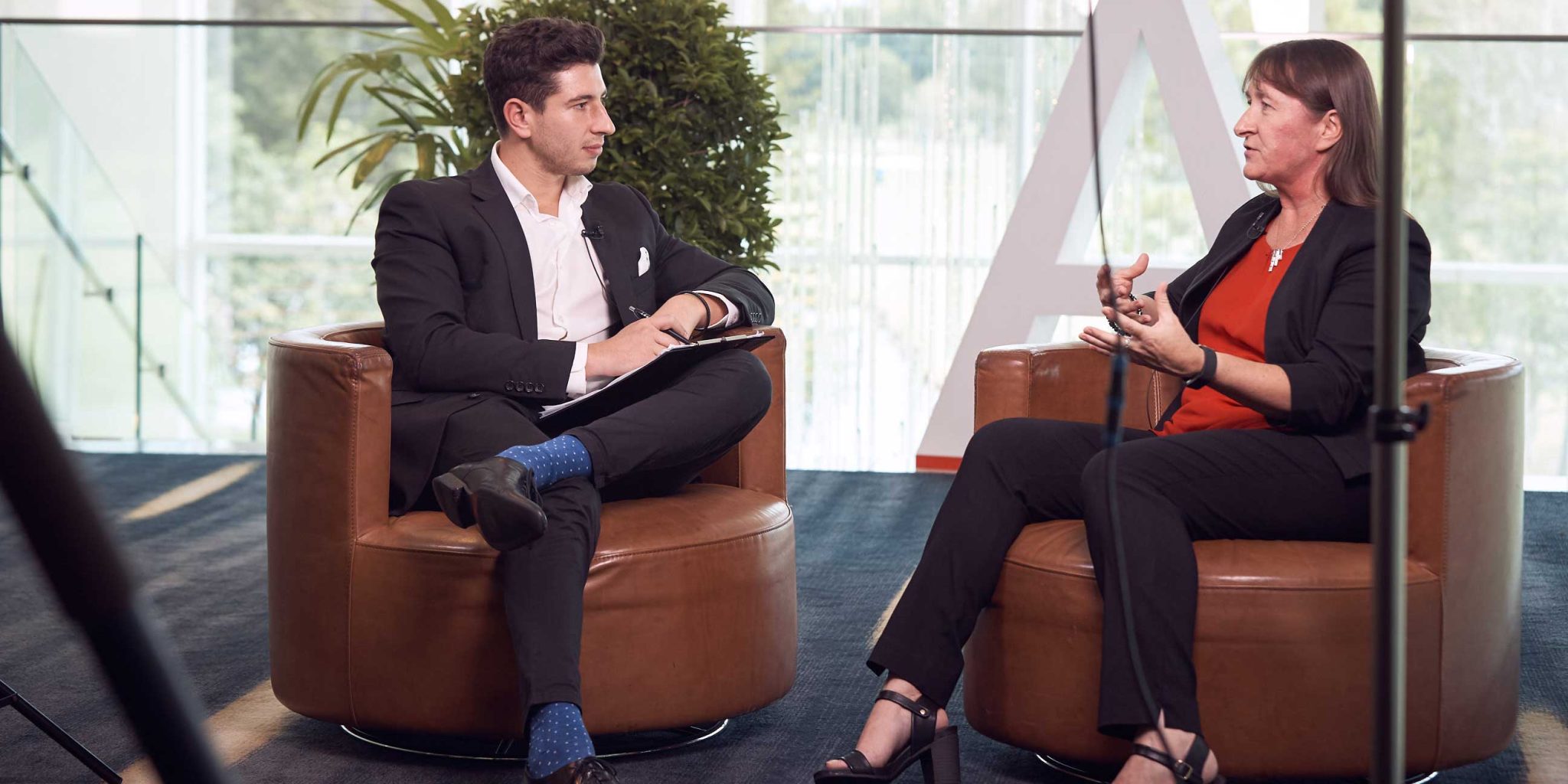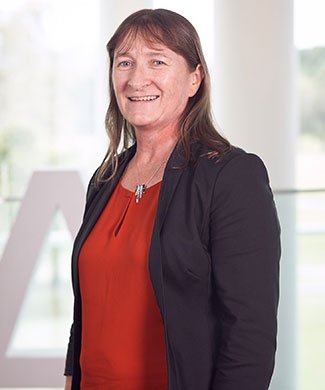Helen Robson oversees ABS’s platforms, end-user computing, and data management. At ADAPT’s Connected Cloud & DC Edge, she sat down with Senior Director of Advisory Services Anthony Saba to give her take on activity-based working and the flexibility it brings technology teams. She also shared the execution of a cloud-first strategy with the Data Integration Program of Australia.
Anthony Saba:
You’ve done a few interesting projects with the ABS of late. The first question I’ll start with is around the mobility project that you’ve recently undertaken and what that has meant for the department and the team.
Helen Robson:
It was a combination of things that came together. But originally we had to revamp our data centre. We actually moved our data centre off-premise for the first time, which meant we didn’t have it in the building. And then we went through a process of giving all staff a laptop so they can all be mobile, whereas previously it was only senior staff that had that capability. Suddenly all staff could do it and we rolled out across all of our offices a program of activity-based working and flexible working arrangements.
So activity-based working they can work anywhere, on any desk in the office. They’ve all got a locker. It improved security through a clear desk policy at the end of the day, everything’s gone. And the flexible working meant that everybody could suddenly work from home. Some of the feedback that we got was from people like, people working part-time who typically work really crazy, a fever when they get into the office, to try and get as much as they can in the part-time hours. So we were getting feedback from people like, on the bus on the way to work, I’ve connected my phone to my laptop, I’ve done all my email and I’ve done all the administration tasks, so that when I get to the office, I’m actually dealing with people, which was really great.
I can leave, I can pick up the kids, I can drop them at soccer, and while they’re doing it, I can sit down, I can log back on and get work done. So it’s giving people a lot of flexibility and that’s been really well accepted around the organisation.
Anthony Saba:
If you look at a number of large organisations in Australia, it’s almost like everyone’s moving towards hot desking. But there’s often a lot of push back because it’s a massive change, right? People aren’t used to it. And in government, there’s this idea that change is even harder. Did you find that? It sounds like it went quite smoothly.
Helen Robson:
There was a lot of work early on and consultation with staff, especially in the early adopter buildings because there was construction going on around them while they were working in the offices as well. But by the time we got to Canberra, which was our last office, we had it pretty well down pat. Certainly, there’s some staff that feel a little uncomfortable with it, but there’s a range of different areas. Smaller desks, larger desks, quiet areas where people choose to work depending on their style.
Anthony Saba:
Fantastic, Are you finding since that shift, the actual technology team has started to transform and work closer to the business as a result of that?
Helen Robson:
In our applications areas, we always had people out with the business, not sitting all together as one group of applications people, so we’ve continued to do that and we’ve enabled all of our offices with video conferencing. So it’s available on people’s laptops. They can do it from home. Any day of the week, I’ll have a meeting where there’s, eight or ten different people in different locations on a meeting, and some will be at home, some will be in another meeting room, in another office. If you can’t fit in one room, that might be in another meeting room in the same office, but they’re all just joining in and that’s been really well adapted.
Anthony Saba:
You mentioned earlier on cloud adoption, that you’re quite early in the journey. All organisations are at different stages. Being where you are right now, have there been some key challenges with the team and with the business?
Helen Robson:
We have regulations on who can have access to data. Getting past that to show that it’s actually secure means we change what we do a little bit. Everything’s encrypted if we have to put it out there, but we haven’t done very much yet, so we’re still working through the processes and we’re looking for all of our new projects to be cloud-first if we can.
There’s a few where we’ve got the Data Integrations Program for Australia, a whole-of-government initiative to make better use of existing public data. We’re looking to move our own data lab into the cloud as the first demonstration of our ability to put it there securely, but it’s visible to everybody and for those researchers to be able to access that, for other agencies then, if they come on board, to be able to put their data in there.
They can put it in themselves. They can see the security. So we’re going to try that. Our website, when we redesign that, we are looking to put that into the cloud. We did have a full on dive in with the Australian Marriage Law survey that we did a little while back now. Despite the fact that it was a postal vote, we had an online presence and we did serverless application with AWS at the time AWS did most of the work, but we certainly learnt a lot through that process about how to do it, how to link it in with our internal systems and how to manage the security and the things that we needed to worry about.
Anthony Saba:
Moving forward right?
Helen Robson:
Well, really you wouldn’t know any different, whether it’s in-house for us or in the cloud. We’ve had all of our surveys online for a very long time now. The censuses, the population and agriculture censuses have all been online for quite some time now. So nearly everything we do, we offer that first. This is just a question of where we run it, and we’re hoping that that doesn’t make too big a difference. But there’s still plenty of options there in terms of how we actually create the systems and deploy them.
We can take it and just extend our network and put it out there. I’m not sure that that’s the most effective way, but we’ll have to assess that system by system.
Anthony Saba:
Absolutely and it’s a learning journey. You mentioned the Data Integration Program of Australia and you mentioned these data labs that you’re building. Are these at an experimental, proof of concept stage at the moment?
Helen Robson:
Our data labs have been there for at least a couple of years now and we have about 700 users. But it’s researchers in universities and other government agencies, so it’s a closed community. They sign their life away in terms of we will behave appropriately with this data, and there’s legislation behind that in terms of what they can and can’t do. We’ve had that in-house for quite some time, which means as it grows there’s a strain on infrastructure. So it’s an ideal candidate to put out there so that overnight, nobody much uses it so you can close it down, whereas in-house you don’t tend to do that. So it’s got different possibilities in terms of if we put it in the cloud). How we can use it, how we can cost it, how we can manage it?
 WATCH
07:33
WATCH
07:33






























